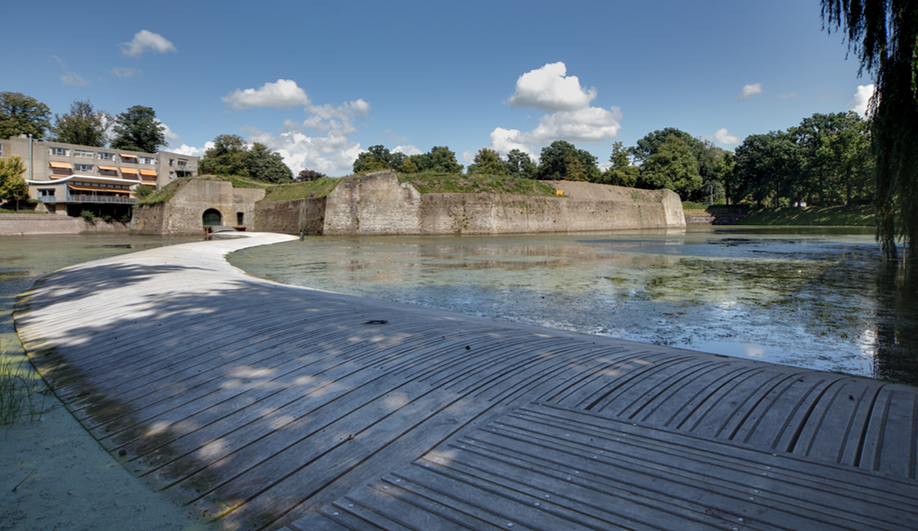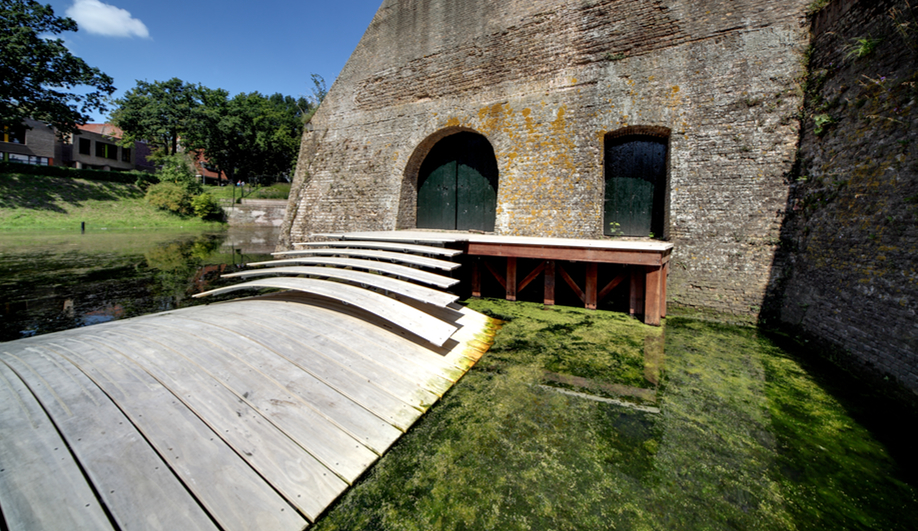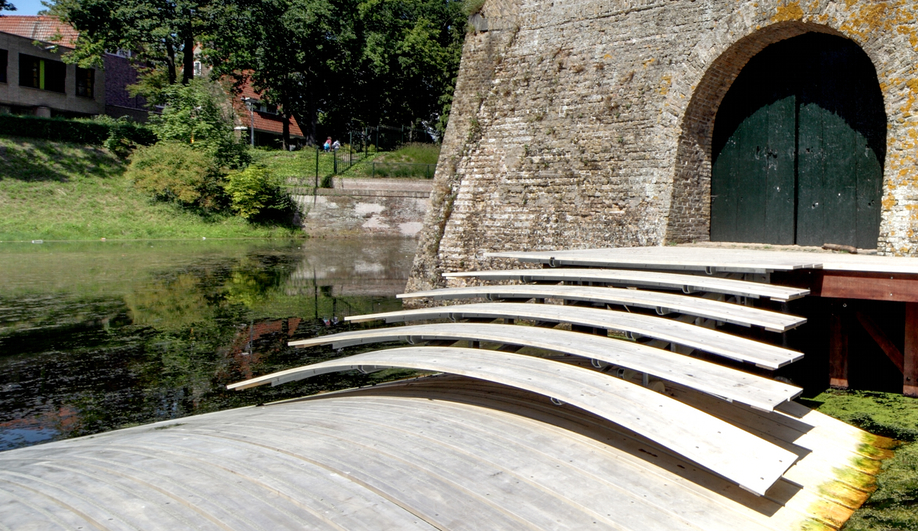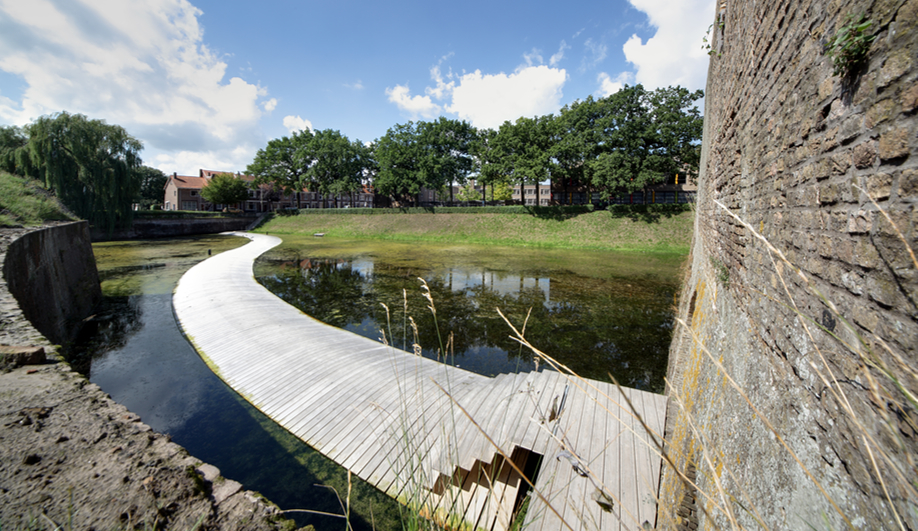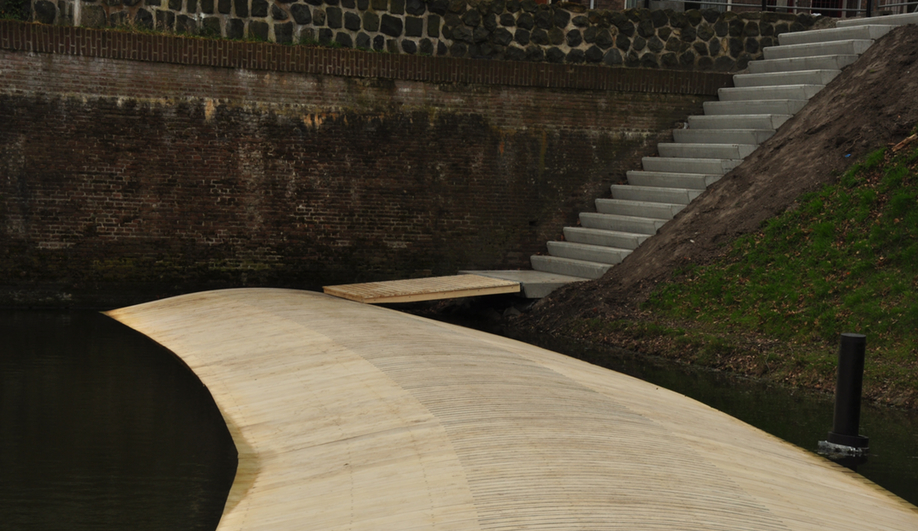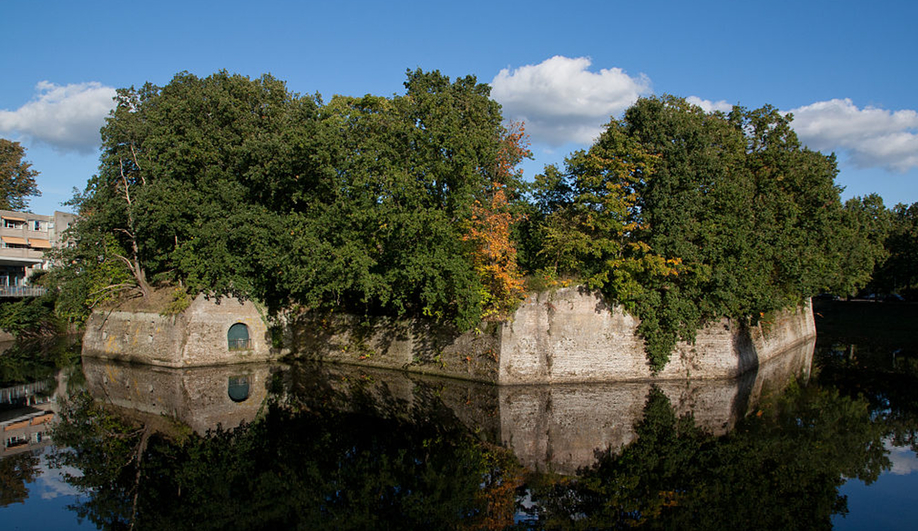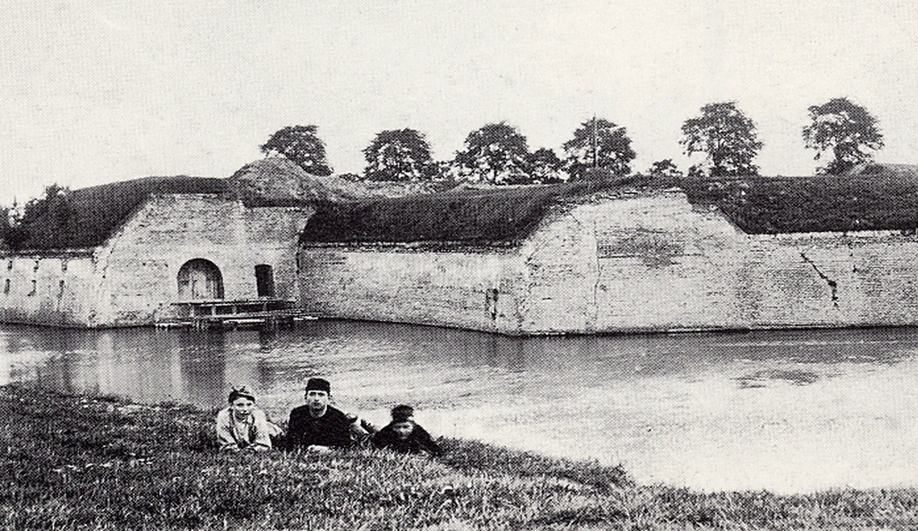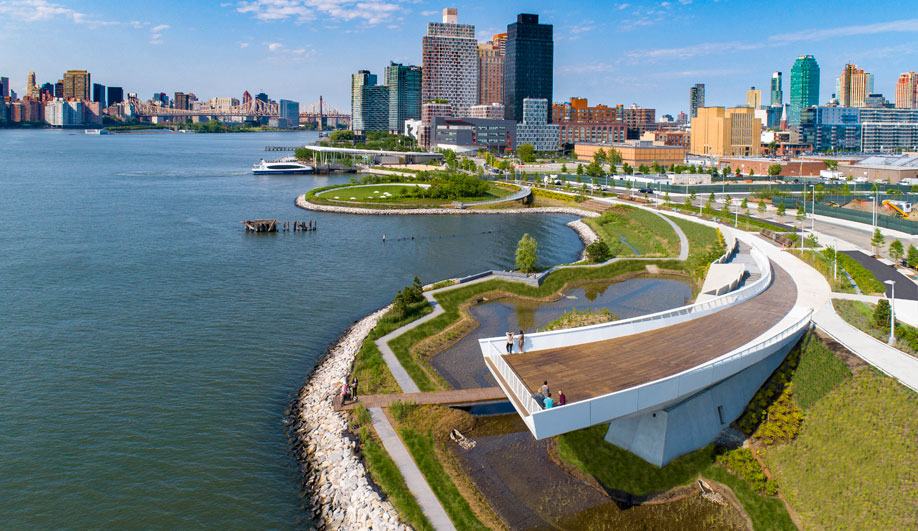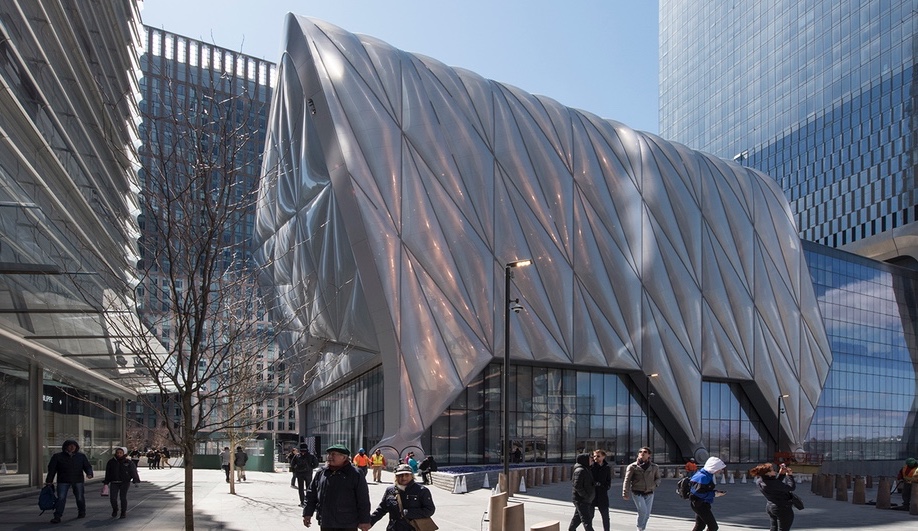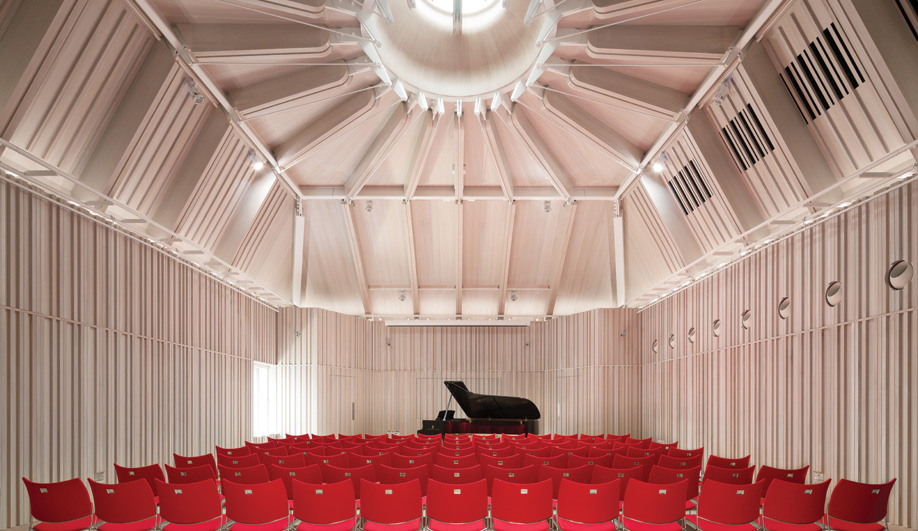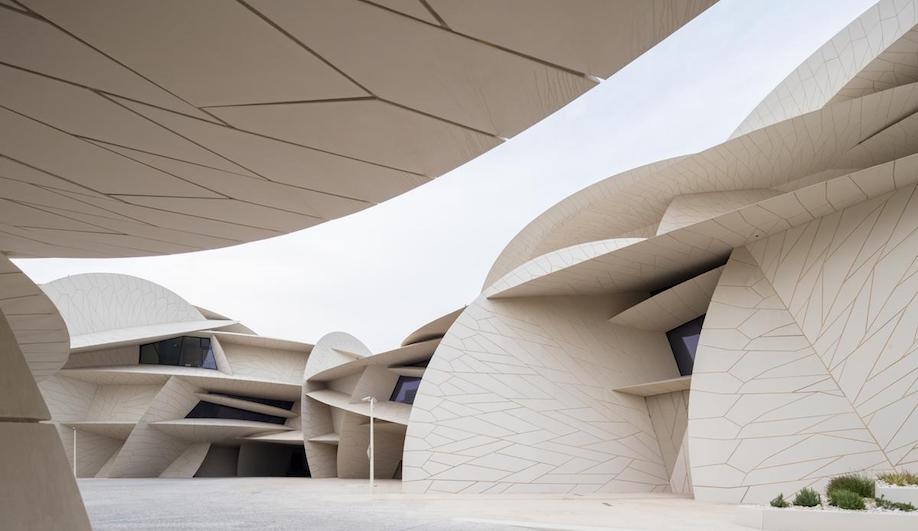Ro&Ad Architecten’s low-lying structure unobtrusively ushers pedestrians across an ancient moat, following an old path taken by rowboats to an 18th century fortress.
Ro&Ad Architecten’s ingenious floating bridge provides access to an artificial island that once witnessed historic battles, but now lies sleepily in a quiet residential neighbourhood of Bergen op Zoom, in the southwestern corner of the Netherlands. The new pathway provides additional access from the south side of the ravelin – a type of defensive earthwork surrounded by moat – to improve circulation and create a second exit route, crucial for meeting safety standards.
This isn’t the first clever bridge that Ro&Ad has devised; in 2011, they received a Dutch Design Award nomination for a bridge set below the water that surrounds the Fort de Roovere to preserve the unbroken appearance of the surface. For the Revelijn Op den Zoom, however, water levels that fluctuate throughout the year made repeating the strategy impossible.
Their solution for the shallower waters of Bergen op Zoom’s moat updates the ancient idea of the floating bridge using a series of air-filled polyethylene pipes. These sealed pipes are arranged with larger diameter pipes at the centre and a narrow ones at the edges, then topped with a sloped walkway made from the high-performance wood product Accoya, which resists swelling in water and fungal decay. These components can be dismantled and recycled in the future, leaving no permanent effects on the historic site.
The bridge’s S-curved path follows the 80-metre route taken by the small rowboats that were once the only means of reaching the island. Because it sits directly on the water’s surface, the bridge keeps a low enough profile that it casts no reflection, and as it requires no piles to stay aloft, it can be pivoted away from the island to the edge of the moat, creating an uninterrupted area for ice skating during the winter.
The island itself is the only extant ravelin designed by architect Menno van Coehoorn, and one of the few remaining traces of the Bergen op Zoom fortress. The fortress was the site of multiple historic battles, falling to the French during a 1747 siege and withstanding British forces during the siege of 1814 before being decommissioned as a defensive station at the end of the 19th century. A bridge erected in the 1930s connected the island to the neigbourhood that now surrounds it, but it is only recently that the island has been fully rehabilitated for use during small public and private events.


